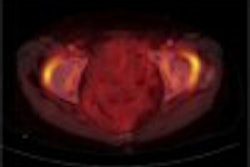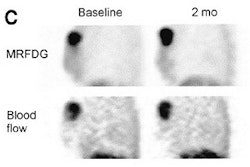This year’s meeting once again demonstrated why the RSNA conference maintains its status as the epicenter of radiology. Nearly 60,000 radiology professionals from all over the world descended on McCormick Place to exchange ideas, present new research, and kick tires on the latest imaging technology.
Dear AuntMinnie Member,
Take a deep breath. Put your feet up. Relax. RSNA 2003 is finally over.
This year’s meeting once again demonstrated why the RSNA conference maintains its status as the epicenter of radiology. Nearly 60,000 radiology professionals from all over the world descended on McCormick Place to exchange ideas, present new research, and kick tires on the latest imaging technology.
Meeting highlights included a study that found PET/CT superior to MRI for tumor staging, a major development for fusion imaging. Another paper found that a new Doppler ultrasound technique could predict early spontaneous abortion, while several other studies gave virtual colonoscopy proponents ammunition in their ongoing colon-screening turf battle with gastroenterologists.
On the business side, CT vendors wowed throngs with the next generation of multislice scanners, while RIS/PACS integration continues to make strides. CAD technology is maturing rapidly, as CAD developers strive to make the technique more effective and more ubiquitous. And a consortium of physicists, radiologists and manufacturers settled on a single standard for CT assessment of coronary artery calcium.
If you weren’t one of the lucky ones able to travel to Chicago (or you’re just now digging out of the e-mail abyss after getting back), our RADCast@RSNA is a great way to review the meeting highlights. Just go to radcast.auntminnie.com to peruse our editorial team’s coverage of the show. In the coming weeks you'll find great RSNA follow-up stories, too, in our RADCast Roundup and our 13 Digital Community special sections.



















